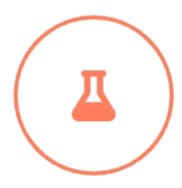Kubernetes certification training helps you master the container orchestration tool. As part of the training you will learn detailed Kubernetes, architecture of Kubernetes, what are Kubernetes Pods, node, how to deploy Kubernetes, creating a Kubernetes cluster, various services available and simplicity of container orchestration using Kubernetes.
In this online certification program, you will learn:
- Basics of Kubernetes container orchestration
- Installation and configuration of Kubernetes cluster
- Deploying apps on the cluster and scaling it
- What are Pods, Services and Volumes in Kubernetes
- Scheduling the applications on the container
- Auditing and troubleshooting Kubernetes cluster
- Kubernetes security best practices
This Cloud Architect Certification program includes real-world, industry-based projects on different domains to help you master the concepts of cloud architecture. Sample projects include:
Project 1: Setting up WordPress blog for your organization using defined specifications with Amazon Cloudformation, AMI and Auto scaling
Scenario: You have been asked to set up a WordPress blog for your company to meet their defined specifications. During business hours (9 a.m.-6 p.m.), the blogging team would like to use their own development copy of the WordPress instance so that any changes don’t impact the live copy.
Goals of the project: Use CloudFormation to create an EC2 instance to run WordPress with the following specification:
- Instance Type: T2.micro
- Create a new AMI of the WordPress instance
- Configure Auto Scaling to launch a new WordPress instance
Project 2: Linux instance for testing new applications using EC2
Scenario: Your development team needs you to create a small Linux instance for testing a new application. You must create the EC2 instance per defined specifications. A few days later, the development team informs you that they want to move the instance into production, so they want you to change the specifications of the instance.
Goals of the project: Create an EC2 instance with the following specifications:
- AMI: Amazon Linux
- Instance Type: T2.nano
- Volume Type: 8GB Magnetic
Reconfigure the instance to achieve the following specification:
- Instance Type: Scale to a T2.small
- Volume Type: Increase to 12GB General Purpose SSD
- Verify whether the root volume on the EC2 instance is displaying the correct size.
Project 3: Content Distribution using S3, Cloudfront, Geo restriction and logging
Scenario: Your company wants to distribute content in the form of a website to their global offices. However, due to legal restrictions, you cannot distribute the content in France and Australia. You must find a way to prevent these offices from accessing the data. The content does not change very often; however, some of the files are very large, and you must find a solution to minimize end user latency. The last requirement is that the audit department wants to track those who access the website.
Goals of the project:
- Set up a static website using Amazon S3.
- Create a bucket and enable static website hosting.
- Enable logging.
- Set up a CloudFront distribution for the static website with Access Logs enabled.
- Set up Geo Restrictions to prevent users in France and Australia from accessing the data.
- Verify that logging is working.
Project 4: Hosting Web Applications and Performance Monitoring
Scenario: The OsCrop Corporation wants to build a highly available web application. As it lacks the team to manage the environment, it is exploring the option of Azure PaaS (Web Apps) for its web hosting. The user pattern for this application is sporadic in nature; it can expect a spike in traffic at any moment. OsCrop’s management is looking to utilize Azure Auto Scaling capabilities.
OsCrop’s management is also looking to have a proper monitoring mechanism to keep an eye on the details of application performance. To achieve this, the team has been tasked to integrate application insights as well.
Goals of the Project:
- Create Azure Web Apps in US East regions
- Enable Autoscaling for web apps
- Deploy sample application from Visual Studio with application insights enabled
- Set monitoring on Azure application insight
Project 5: Provision Dev Environment & Secure Azure Web Applications
Scenario: The Oscrop Corporation’s management is looking to use Azure as their development platform for the new.Net MVC application they are building. They have identified Visual Studio 2017 as their development framework. They are looking to test Azure Virtual machine to host the development editor. You have been given the task of validating the Community edition of Visual Studio 2017 on Azure VM. As Oscrop’s development team is in Eastern US, they are exploring this as the region for this deployment.
The operations team at Oscrop is looking to offload the application's authentication to Azure AD. Any user who is part of an Active directory should be allowed to log in to the application. They want you to validate this using a sample MVC application.
Goals of the Project:
- Create a Virtual Network and Resource Container
- Create the Development Virtual machine
- Configure the Virtual machine for development
- Create Azure AD for application authentication
Project 6: Create two Amazon S3 Buckets
Scenario: Create two Amazon S3 Buckets in Mumbai region. Bucket Names will be “testoct28” and “testoct28log”. After creating both the buckets, upload any sample file to the bucket “testoct28”. Then enable Logging in for the bucket “testoct28”. Ensure that log is saved in the bucket name “testoct28log”; also enable the versioning in the bucket “testoct28”. Then Enable the Transfer Acceleration in the Bucket “testoct28”.
Goals of the Project:
- Create an Amazon S3 Bucket Name "testoct28" in Mumbai Region
- Create an Amazon S3 Bucket Name "testoct28log" in Mumbai Region
- Upload sample file to testoct28 bucket
- Enable Logging in for bucket "testoct28"
- The log should be saved in bucket "testoct28log"
- Enable Versioning in the bucket "testoct28"
- Enable Transfer Acceleration in bucket "testoct28"
























